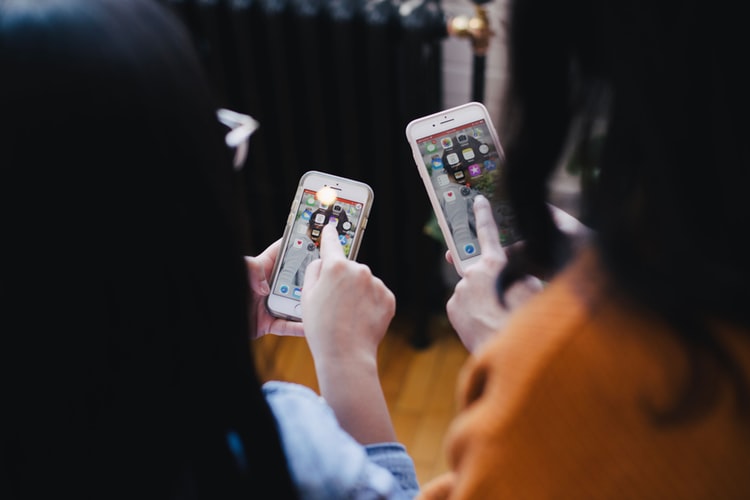Globally, the 5G ‘revolution’ has continued to gain traction. China recently rolled out ‘one of the world’s largest’ 5G networks this month. As CNET noted in late October, 5G’s revolutionary capacities are likely to be seen until the technology fully launches ‘in mass in 2020.’ So what do we make of it?
What is 5G, anyway?
Fifth Generation wireless cellular technology, or 5G, promises 1000 times the speed offered by the previous technology known as 4G. How does it work? 5G uses a super-high-frequency spectrum, which has a shorter range but higher capacity, to deliver a massive pipe for online access. As there can be interference with this high-frequency spectrum, carriers are also using lower-frequency spectrums used in today's networks (ie 4G) -- to help send 5G across greater distances (including bypassing walls and other potential obstructions.)
What are the benefits of 5G?
There are numerous benefits to this new technology, so we’ve included just a few benefits below.
- Faster speeds. Speeds of 10-500Gbps (whereas 4G is only able to provide 20Mbps)
- Higher resolution videos. The ability to stream 4K HDR content (faster streaming of your favorite shows)
- Higher resolution images. Higher pixel resolution (meaning higher resolution images downloaded quicker)
- Power all your devices more effectively. 5G can power more devices that connect to the internet of things--from Alexa to your new, ultra efficient water heater to your Roomba and beyond!
- Stay connected. And importantly, the opportunity for uninterrupted connectivity across the globe
How will 5G impact mobile development?
Before starting to develop a mobile app, effective developers consider the devices and networks that their software (namely, applications) will be used on. They develop by considering what the necessary requirements are. Here are three terms to consider when adjusting requirements lists during a 5G app development specification creation process. These include:#1 Enhanced Mobile Broadband (eMBB)eMBB means that Augmented Reality (AR), Virtual Reality (VR), UltraHD and 360-degree video streaming can be utilized in a 5G mobile app. Several things to consider here: How might your audience want to use these features? Are they useful for your app to have in its’ minimum viable product--or are you able to include these features in version 2? #2 Ultra-Reliable Low Latency Communication (URLLC)This tongue twister of a name means that data can transfer between devices in real-time with minimum delay, called latency. This feature is new to 5G and is especially useful if you’re operating a moving vehicle or maybe doing a medical procedure; it’s imperative that the data is sent without delay. What you’d consider during the mobile development process is: How quickly does your data need to be processed?#3 Massive Machine Type Communication (mMTC)This feature involves data communication without human interaction. This can be useful for payments, tracking, and monitoring remotely. One of the most important features of 5G technology is that of high-speed internet. Regardless of size, users will be able to download apps within a matter of seconds. The same holds true for file transfers. It also means that users can transfer money or financial information from one account to another within seconds.
Who will benefit?
According to the technology market research professionals at Informa Tech, it’s estimated that the revenue-generating power of 5G will be $13.2 trillion worldwide by 2035. It’s also expected to create millions of jobs--with those who are mobile app developers benefitting the most. Those who provide structure and content will benefit as well.Hardly any industry will not be affected by the inception and growth of 5G technology; but there are a few industries that will benefit greatly. These industries include the following:
Healthcare: In the world of healthcare, the beneficiaries include, for example, remote patient monitoring and virtual consultations between patient and medical provider.
Logistics/Manufacturing: The areas of logistics and manufacturing will likely see growth in the controlling of machinery remotely which can lead to higher production efficiency. With that capability comes a reduced risk factor for those involved in potentially at-risk situations (ie using the Internet of Things (IoT) to spot risky patterns for either a worker or their [robot] technical counterpart).
Augmented Reality (AR) and Virtual Reality (VR): In considering AR and VR, advances in entertainment first come to mind but there are also practical applications such as in healthcare, military and education.
Internet of Things (IoT): When long battery life and faster speed of data transfer are harnessed together, the stage is set for growth in the IoT area. One can think of countless industries which the IoT could impact.
Two other considerations: Ambient computing and Machine Learning & AI
Ambient computing“Ambient” means the surrounding environment. In photography, ambient lighting is the existing lighting that surrounds the subject. Ambient computing involves the involvement of the surrounding environment in a digital fashion. It involves the use of sensors and devices among other technologies. Consider pairing the speed and low latency of 5G technology with wearable devices. Data related to your location, nearby objects and the people around you can be accumulated.Machine Learning and AIMachine Learning and Artificial Intelligence will benefit greatly from the incorporation of 5G technology. Consider driverless vehicles. Processing data from its’ surroundings can tell the vehicle to slow down, speed up, or break--all in real-time.
Challenges
In addition to benefits, there are some issues that come with developing in 5G technology. Current devices are not compatible with 5G and will need to be replaced. The challenge to mobile app developers will be that of creating multiple app versions; some users will be using 5G-enabled devices while others will have devices still running on 3G or 4G networks.What’s more, hardware needed to deploy 5G is expensive and users will need a good reason to replace their current devices with 5G-compatible ones. There will be security issues due to the sheer number of mobile devices using the 5G technology.
Summary
5G has much to offer the technology market in the way of speed, connectivity, coverage and low latency--and when it resolves the cost and security issues, it will become the most popular network yet. This, of course, is positive news for developers of mobile apps. But with the added benefits will require better planning and business model adjustments. As always, Builder and our network of 75,000 technical and creative resources are here and ready to help you turn your dream into reality--whether it’s with 4G or 5G. Don’t wait until 5G is released to build your next idea--do it today, Builders! Find out how right here.
Lakshmi is a communications professional with over 6 years of experience across industries- from digital media and fashion to health and technology. She specialised in Integrated Marketing and Communications cum laude, and naturally, can work her magic best when handling public relations, marketing and editorial content and communication. Most people find her moderately introverted, conspicuously sassy, significantly energetic, and massively dog-loving.











 Facebook
Facebook X
X LinkedIn
LinkedIn YouTube
YouTube Instagram
Instagram RSS
RSS


